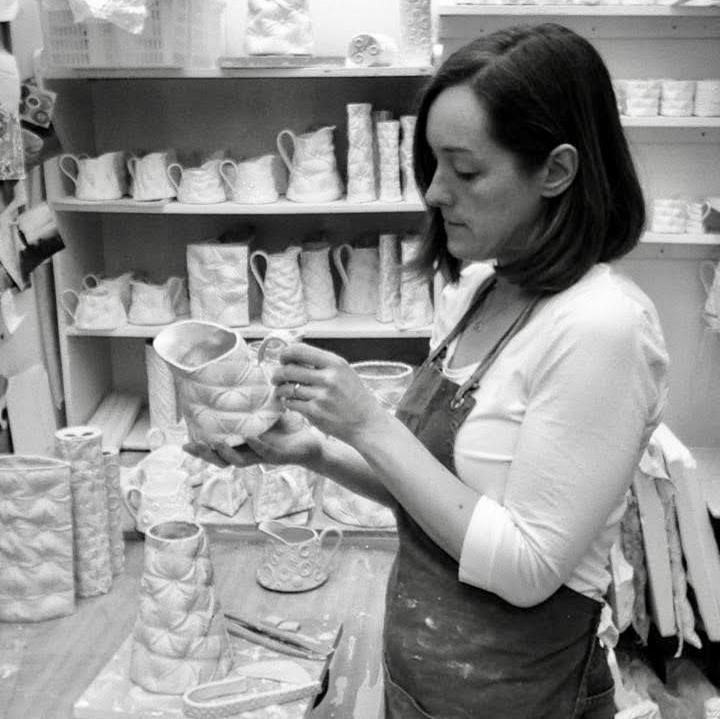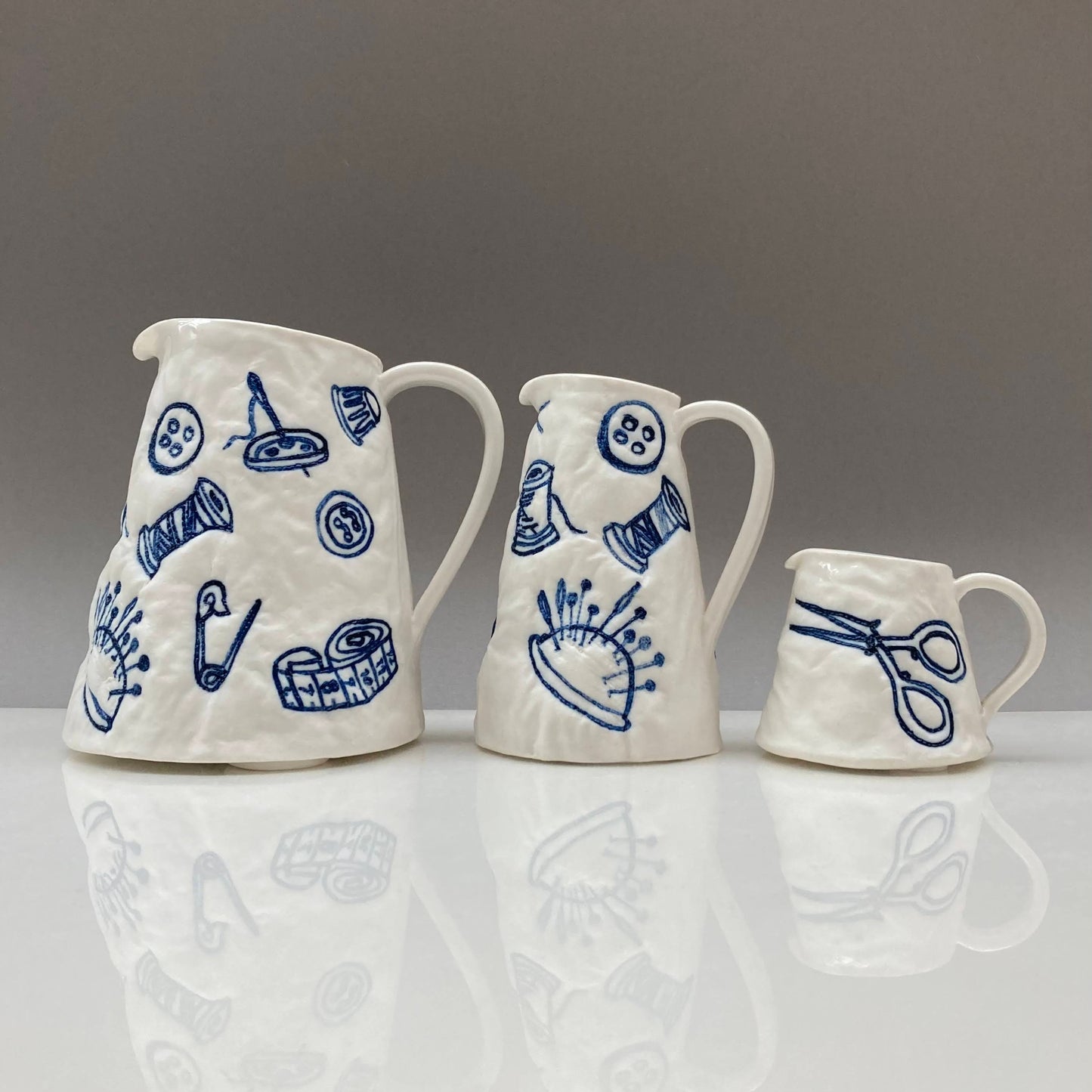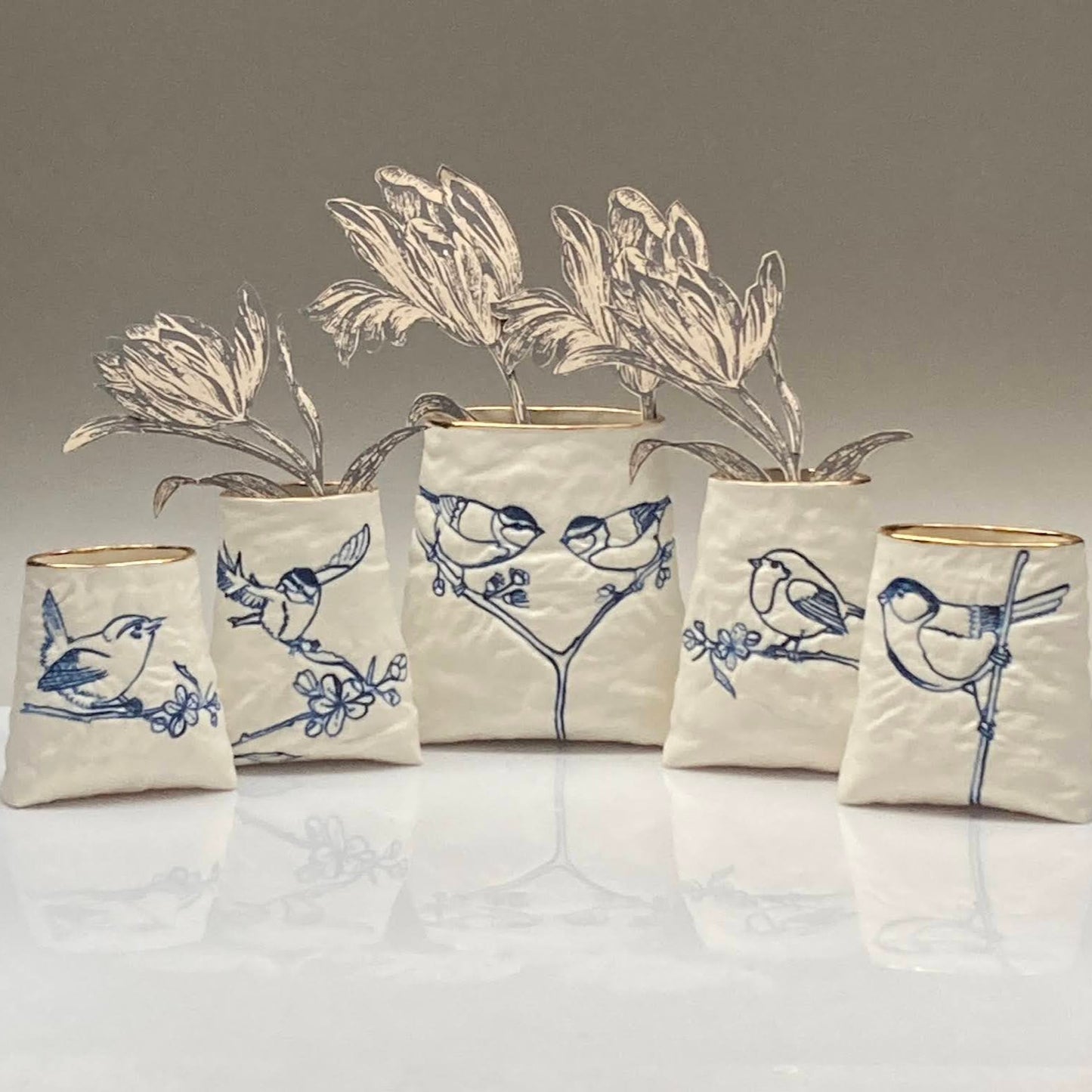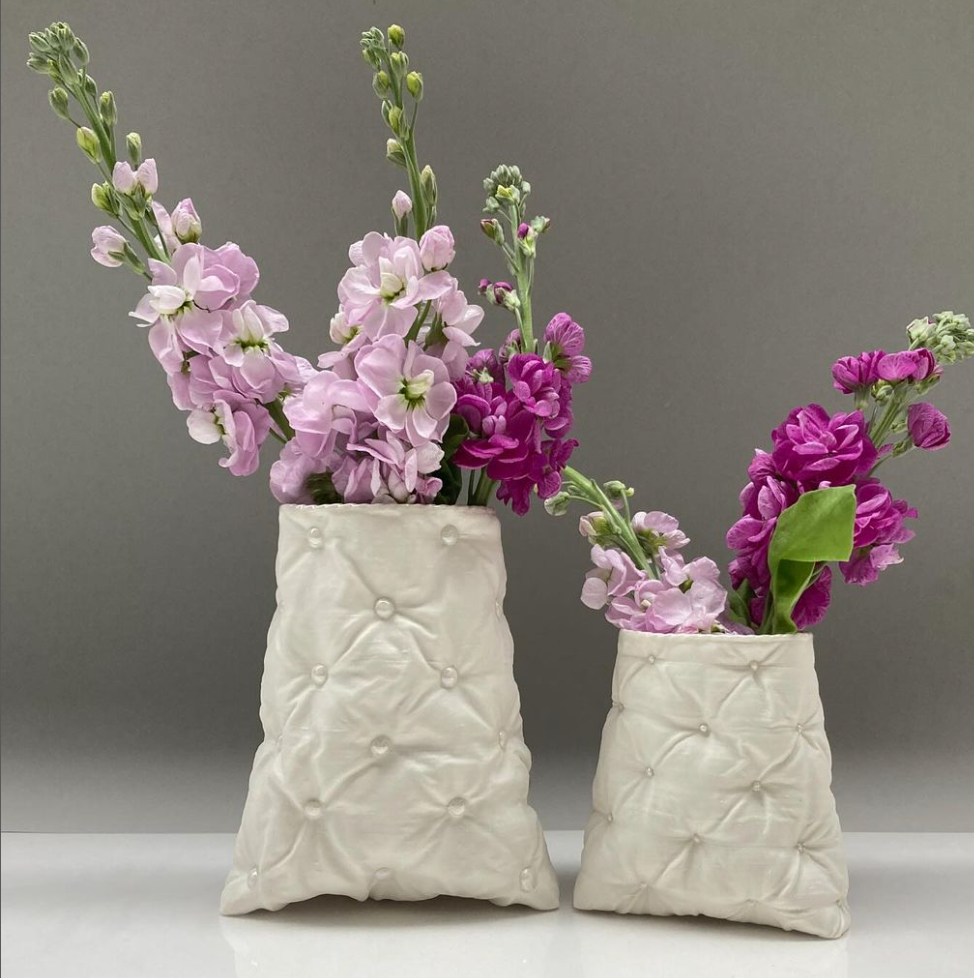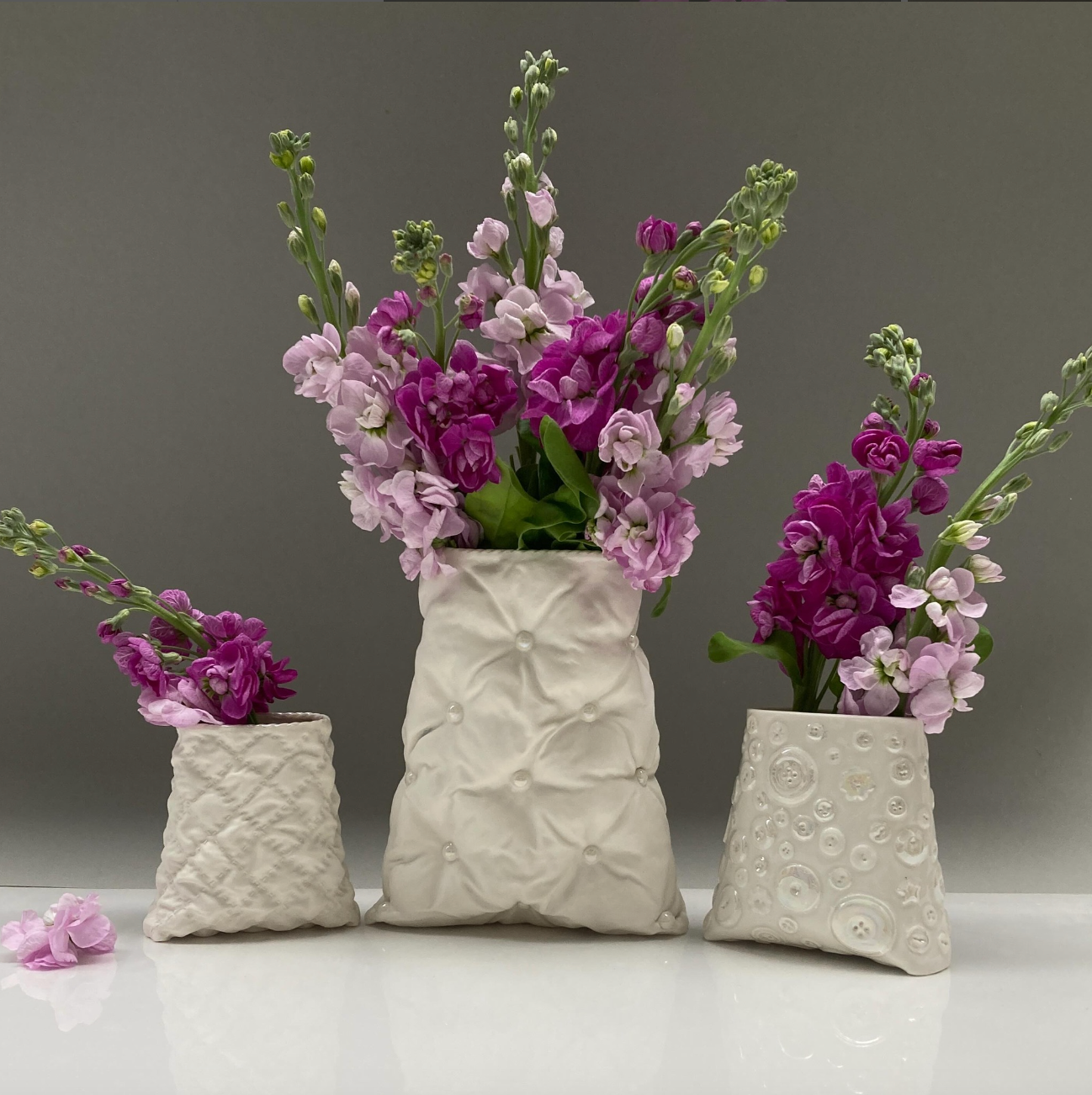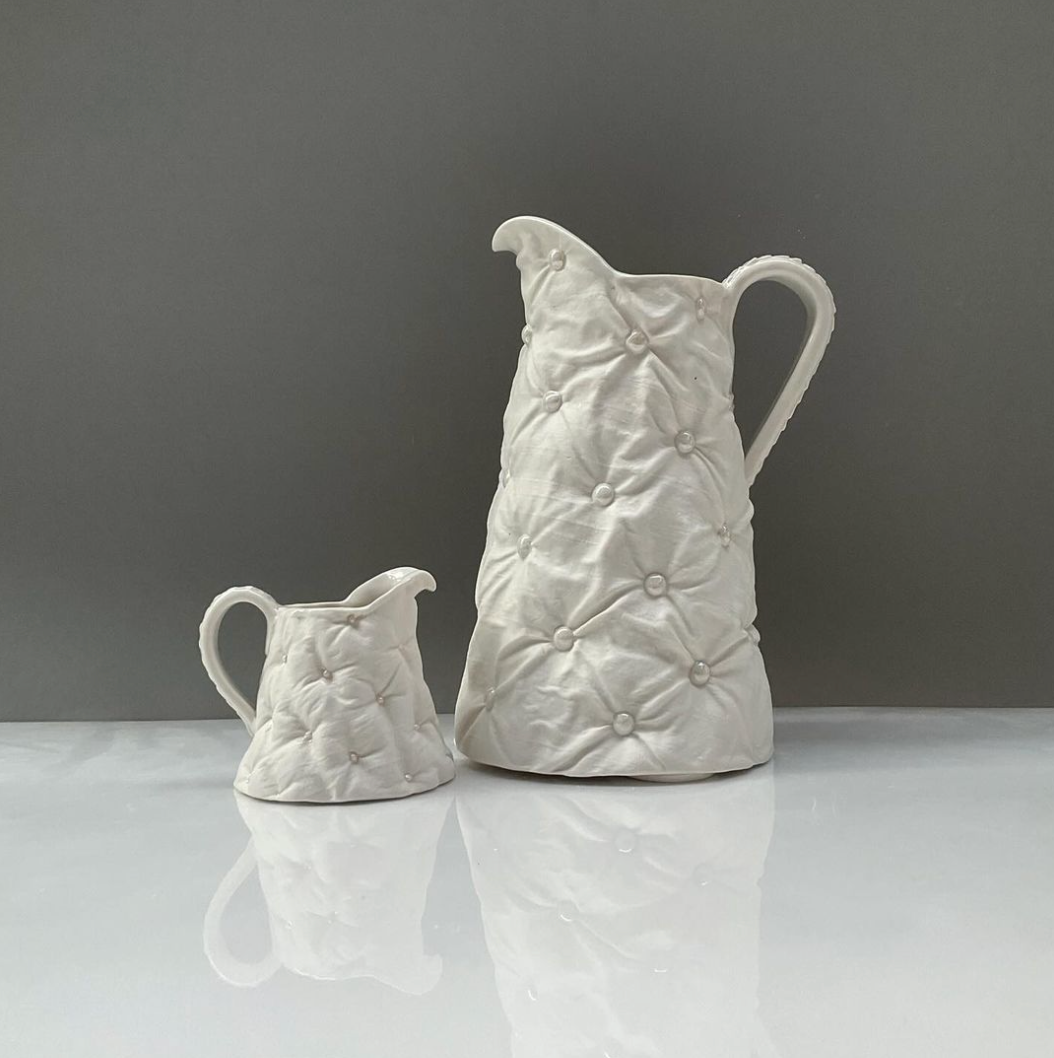Sarah Grove
Sarah Grove's creative process begins with a piece of textile, which they hand-sew into patchwork, appliqué, quilt, or embroider using a wide range of textures. They also incorporate machine-embroidered motifs like birds, shells, and bees. After covering the textile in plaster and allowing it to set, they peel away the fabric, leaving a plaster "negative." Next, they roll out a slab of porcelain, using paper templates to cut and shape pieces needed to form items such as jugs or vases. The porcelain is pressed against the plaster, transferring the intricate details of the textile onto the clay.
Once the clay is prepared, they carefully cut and assemble the pieces, paying close attention to preserve the textile impressions and align seams. Additional details, like buttons for feet or braid on handles, are added through sprigging. The work is then dried and biscuit-fired, preparing it for glazing or, in the case of machine embroidery, for cobalt painting. With precision, they use a fine brush to paint only over the stitched areas, a delicate process since cobalt can easily transfer to unintended parts before firing.
After the second high-temperature glaze firing, the pieces, now in plain white but with rich texture, receive highlights such as opal, mother-of-pearl, or gold lustre. These small touches are applied and fired once more, creating striking items that showcase the complexity and labor involved in their creation.
Find out more and follow Sarah Grove:
www.sarahgrove.co.uk
Share
